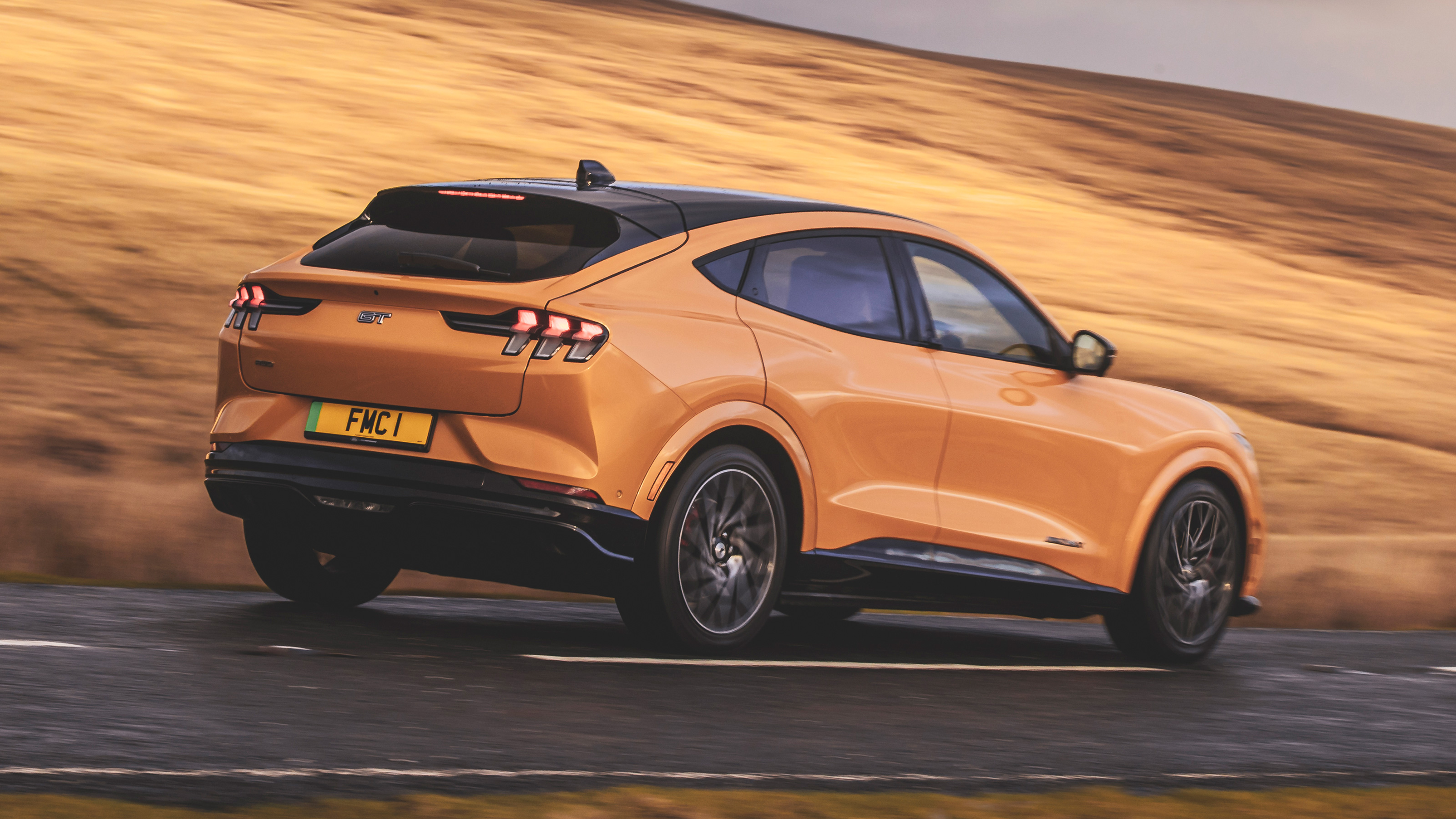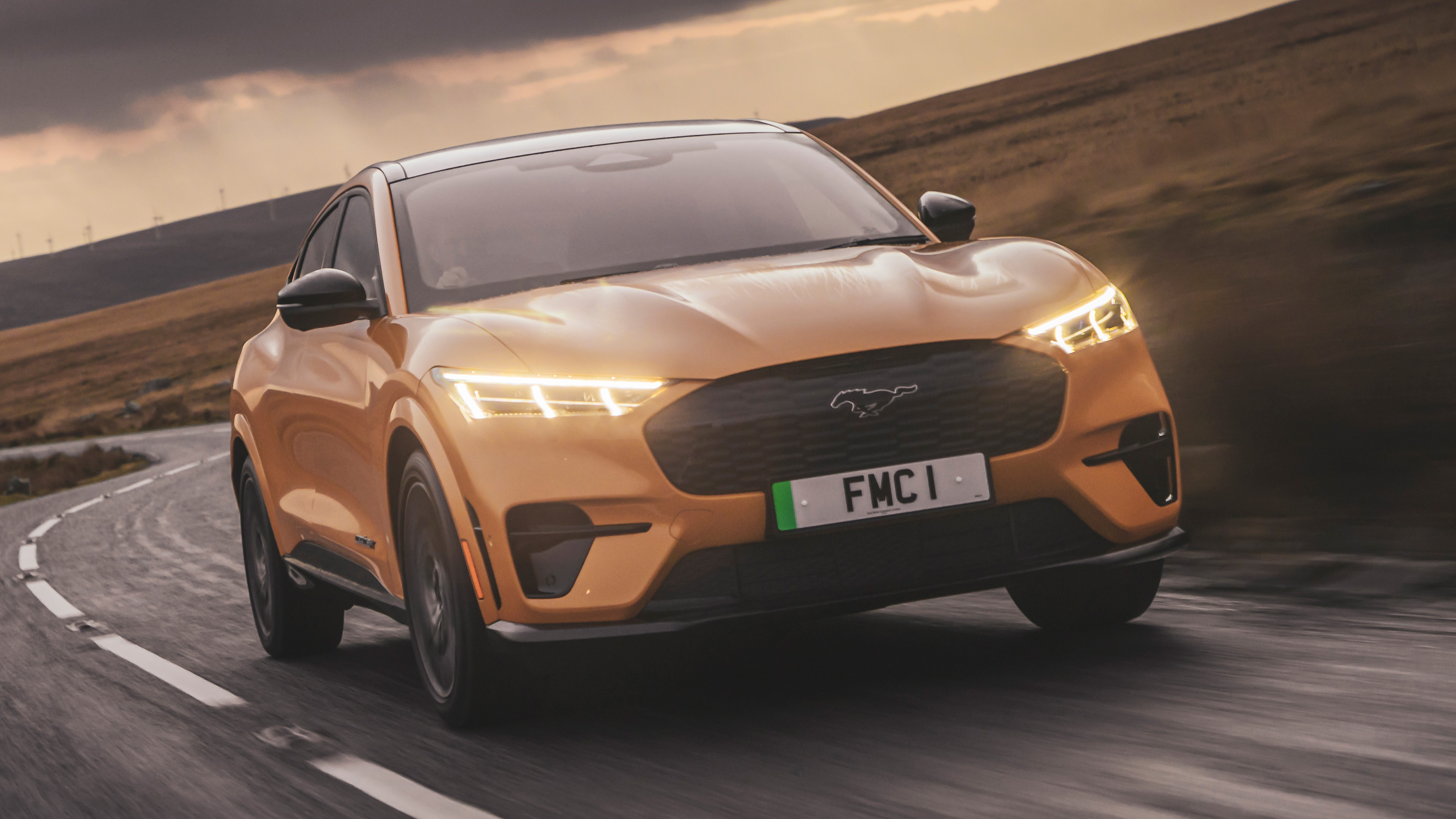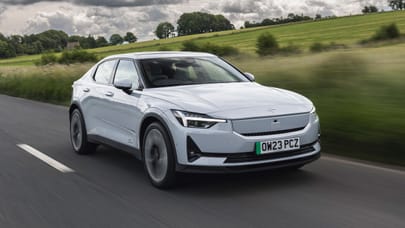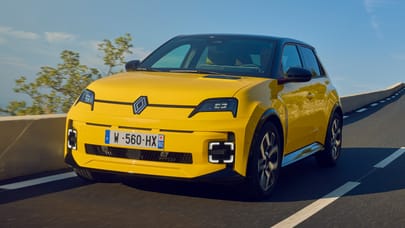
Good stuff
Comfortable and capable, good range, some driver appeal
Bad stuff
Not a Mustang in any way, shape or form, some cheap trim, low speed ride, grabby brakes
Overview
What is it?
Ford’s first fully-fledged electric car. And that makes it Very Important Indeed. You won’t find a Ford badge on it anywhere – we’ll come on to discuss what that means further on – but for now let’s dig into it a bit.
Firstly, some facts. Built on an all-new platform, it’s available with either a 72kWh (Standard Range) or 91kWh (Extended Range) battery, and with either a single motor (rear-wheel drive), or twin motor (all-wheel drive) layout. Claimed range is up to 373 miles, making it one of the longest-haul electric cars around. The entry-level car weighs just under two tonnes and has 265bhp, while the most potent GT version, capable of 0-62mph in 3.8 seconds, has 480bhp.
How much does it cost?
The most affordable model is the rear-wheel-drive Mach-E: 292 miles of range for £43,330. One step up is the 290bhp Extended Range at £51,880. That’s the one that can go furthest between charges. The extra power is needed to ensure it’s not slower than the 120kg-lighter base model.
Then we have the dual motor AWD iteration. Where once you could pair this with the smaller battery and 265bhp for £49,650, you can now only have the longer-range version with 346bhp, 342 miles of range and a price tag of £57,905.
The top-of-the-range GT version, available only in Extended Range, AWD form, will set you back £67,040. Range falls to 305 miles WLTP, but for that price you’ll be able to play the trump card down the local because it’s quicker from 0-62mph than a 5.0-litre Mustang coupe. The caveat here is that these are all promotional prices, available at the time of writing thanks to a £7.5k deposit contribution offer from Ford. More details on the Buying tab.
Ford has also - for reasons we are yet to fathom - put a jacked-up, rally-inspired version of the Mach-E into production.
Anyway. They all seat five, have a hatchback boot and a 100-litre ‘frunk’ in the nose. The bigger story, however, is up front in the cabin where you’ll find a Tesla-aping 15.5in portrait touchscreen and many claims about connectivity, phone mirroring, apps and self-driving. It works well, too – the physical knob controller is handy, if a little tacky – but compared to Tesla’s, takes a little bit of getting used to.
Which, really, is the story of the whole interior. See, Ford has clearly tried to blend past and future, with switchgear not abandoned to touchscreens entirely. And indeed in some cases, nicked from other Ford models (in the case of the column stalks, from the Fiesta - RIP).
Ford has clearly been busy with the sketchpad, but the materials and quality are just so-so: it feels decidedly American in comparison to its European counterparts.
But… is it a Mustang?
It certainly hints hard at it with the thrusting bonnet and light signatures. But no: it doesn’t feel or drive like a V8 Mustang in any way.
This is a two-tonne SUV, after all. And initially it feels that way. Around town you notice every bump in the road, thanks, in part, to the 18in wheels, but also because there’s nothing in the way of creaks or groans. It feels typically well built, this.
Picking up speed improves things with the ride evening out, and it’s quick enough in the usual EV way: even in the least powerful 265bhp model, there’s a handy 317lb ft of torque to play with. Artificial steering means there’s little in the way of feel, although it's predictable around corners and you can at least emerge briskly on the other side. Range anxiety permitting.
Okay, but why has Ford called it a Mustang?
We understand the reasoning: it’s a cool brand and helps Ford justify the money it needs to charge to turn a profit. But it also puts Ford in a dangerous position for the future.
Ford has been making a big song and dance about electrification, but mostly it's launching mild hybrids, plus a few plug-ins. The first proper BEV after this Mach-E was the e-Transit; the new Explorer SUV is... based on the VW ID.3.
But more than that, how will any future electric cars tie in to the Mach-E and benefit from its market positioning as Ford’s halo EV? Ford has potentially made a rod for its own back. And come to think of it, in the UK at least the perception of Mustang is of a relatively low-tech muscle car...
That’s all further down the line though. What you need to know now is that the Mach-E lines up against the likes of the Volkswagen ID.4, Volvo XC40 Recharge and Tesla Model Y. How does it shape up, and more importantly, which one can cope best (if at all) with the family getaway? Click these blue words to find out…
Want to know what the best electric cars are? Click here for the top 20
Our choice from the range

What's the verdict?
The most important Ford since the Mondeo? The Model T? Probably somewhere between the two in terms of what it means to the brand and its future. As crucial as the original Mustang, then; another car that kick-started the blue oval and launched it into a new and exciting future.
Leaving any trace of Ford badging off the Mach-E is probably a short-term gain, but could prove a long-term loss. But that’s not what we’re here to discuss. Make up your own mind about the look of the car and what it says about you, but be in no doubt that underneath this is a fundamentally very well executed machine.
It treads the fine line between lifestyle and family versatility as deftly as either the Polestar 2 or Jaguar I-Pace, and like them has a bit about it dynamically. Put simply, for an electric car it’s engaging to drive.
Just don’t be misled by the badge. This is not a Mustang and to think of it as one is misleading. It’s an electric crossover. And it’s a good one.
The Rivals
Trending this week
- Long Term Review
Living with a Honda Civic Type R: bad bits, good bits









